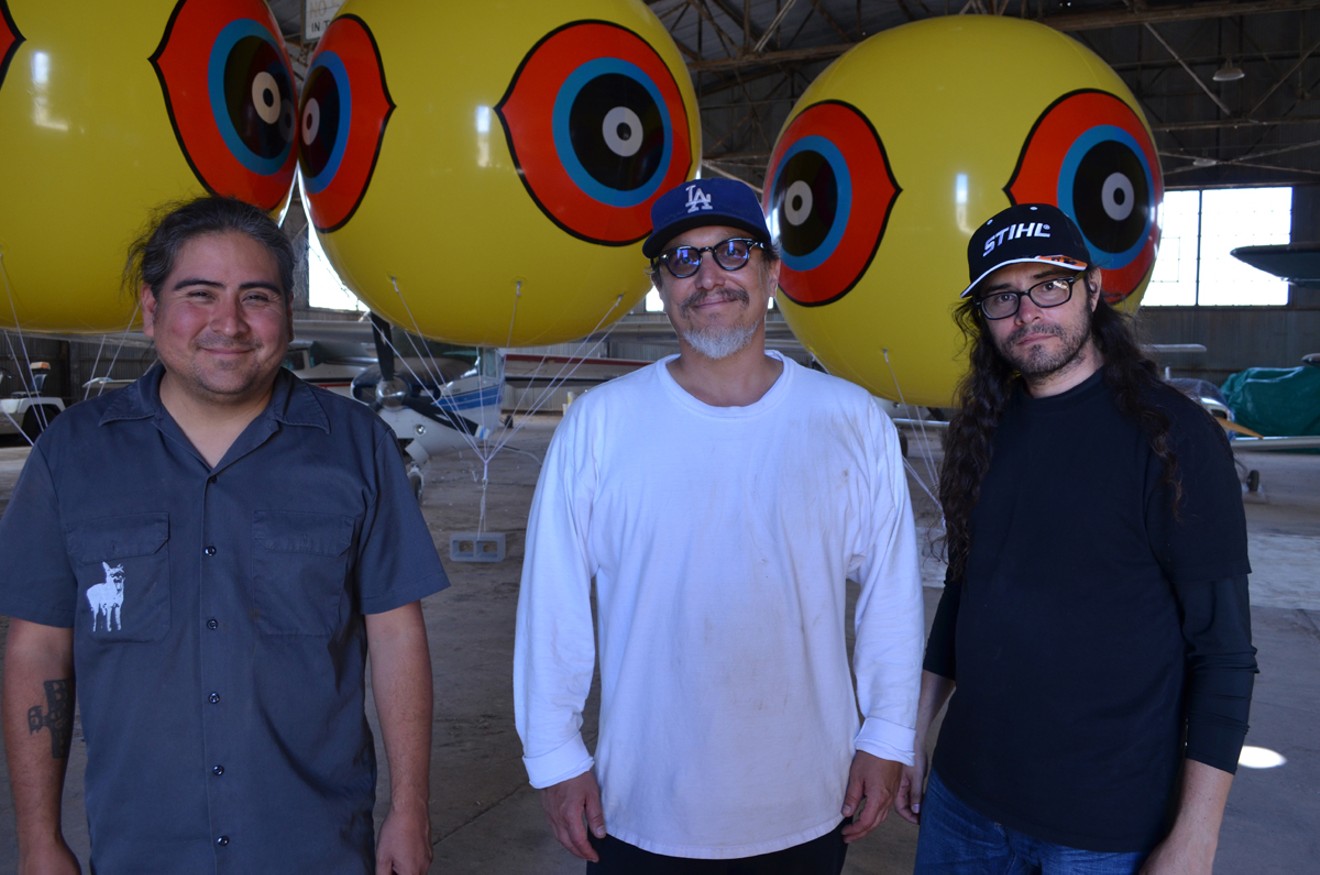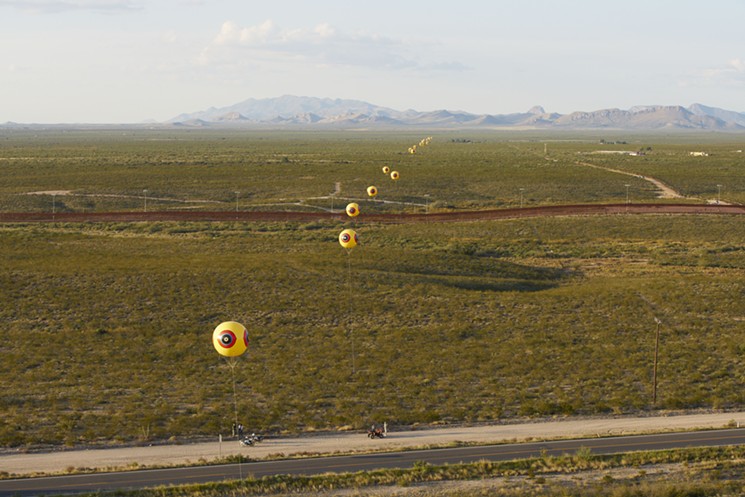The film features the Repellent Fence installation created by the Postcommodity art collective in October 2015. The installation comprised 26 large-scale yellow balloons with eye imagery. For several days, it bisected the border between Mexico and the United States.
Currently, another Postcommodity work tackling border issues is part of the Whitney Biennial in New York City.
Postcommodity includes Arizona artists Raven Chacon and Cristóbal Martínez, as well as Kade L. Twist, who lives in New Mexico. Using a shared indigenous voice, the collective explores manifestations of colonization prevalent in contemporary culture.
This isn’t the first time Postcommodity's work has been shown at SMoCA. In early 2015, the museum’s “southwestNET: Postcommodity” exhibition included two installations by the collective. At the time, artist Nathan Young was also a member.
Postcommodity artists will attend Arizona's debut screening in Scottsdale. The film’s director, Texas-based Sam Wainwright Douglas, is attending Saturday’s screening and discussion as well.
Douglas has high praise for the artists at the heart of his film.
“The Postcommodity artists are really exceptional,” Douglas says. “They create experiences instead of objects, and their pieces serve as mediators between places and people.”
Douglas and his film crew spent several days along the U.S.-Mexico border with Postcommodity, documenting Repellent Fence preparations and its installation.
Then he set about putting their work in context, creating a film that also explores the broader history and significance of land art.
Land art involves using land or natural elements gathered from the landscape to create works of art. Most land art pieces are large-scale installations created not only with, but also on, the land.
The mid-20th-century land art movement included sculptor Robert Smithson’s Spiral Jetty, a giant swirl-shaped rock formation along the Great Salt Lake, which the Utah legislature only recently deemed an official state work of art.
James Turrell, an Arizona artist represented by Lisa Sette Gallery, is working now to complete his Roden Crater land art project launched in 1977. Its raw materials, located in the Painted Desert in Northern Arizona, include a volcanic cinder cone and light.
Douglas' film includes conversations with experts who address where Repellent Fence fits in to that movement. But there’s more to that story than just midcentury American works, he says.
“Land art, like indigenous mounds in Mississippi, goes back thousands of years,” Douglas says. “It didn’t just start in the ‘60s with a bunch of white guys from the Northeast.”

Artist Raven Chacon leads Douglas, Arizona, volunteers in taking balloons into the desert in October 2015.
Lynn Trimble
At first, Douglas' focus was simply land art, and how it changes people’s perceptions. He started back in 2011 by collecting footage of land art, and talking with experts about its significance. But something was missing, he says. “I didn’t want to make an art history film.”
“I didn’t quite have a story at that point, and I was looking for something more dynamic and contemporary,” Douglas says. Then, he heard about Postcommodity and their plans for Repellent Fence. Soon he connected with the artists, and began filming their preparations for the project.
For Douglas, the appeal of Repellent Fence was its potential for changing the mainstream narrative. “Most discussion of the border centers on cartels and smuggling,” he says. “I like the way Postcommodity is complicating that dialogue.”
He hopes the film helps viewers appreciate the nuances of border life.
“Indigenous people have gone back and forth across this land for thousands of years,” Douglas says. “Those communities are still there, and should be celebrated.”
Now, Douglas is busy lining up fall screenings and a wider distribution for the film, which premiered on February 18 at the Museum of Modern Art in New York City.
Timing for the film’s release couldn’t be better.
Postcommodity’s work is currently featured in the 2017 Whitney Biennial, an exhibition that surveys America's contemporary art landscape. Their four-channel video with sound installation (A Very Long Line, 2016) comprises projections of images along the U.S.-Mexico border, including neighborhoods, desert landscapes, and slotted metal fencing. That exhibition continues through June 11.
In January 2018, ASU Art Museum will exhibit ephemera, video, and sculpture from Repellent Fence as part of a larger "Talking Into Action" exhibition, says Julio César Morales, curator for ASU Art Museum. The exhibition is part of Pacific Standard Time, an initiative of the Los Angeles-based J. Paul Getty Museum exploring Latin America and Latino art.
Scottsdale Museum of Contemporary Art screens Through the Repellent Fence: A Land Art Film in its SMoCA Lounge at 5:00 p.m. on Saturday, April 22. Seating is limited. Get details and tickets, which are $7 ($4 for museum members), on the Scottsdale Museum of Contemporary Art website.















